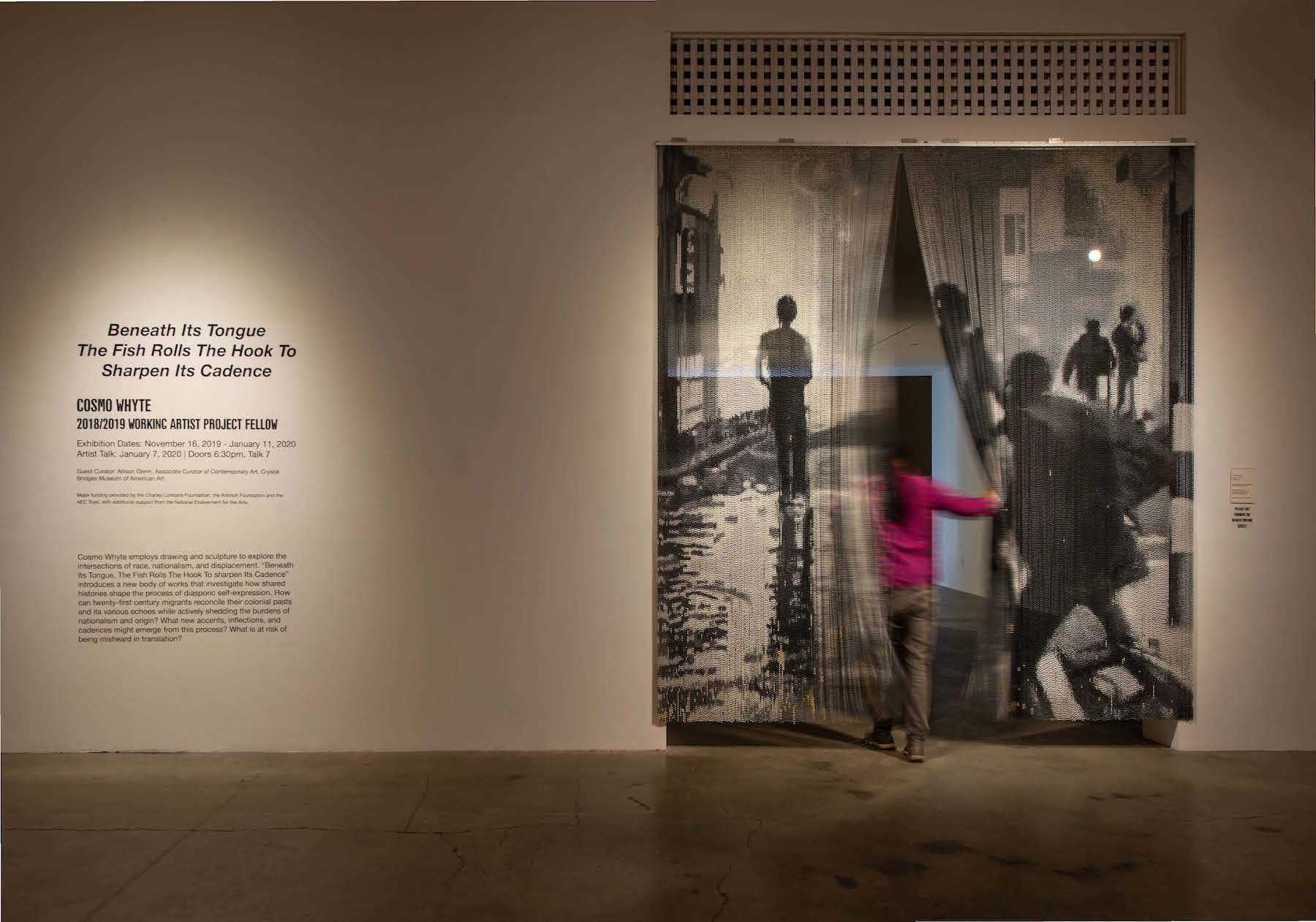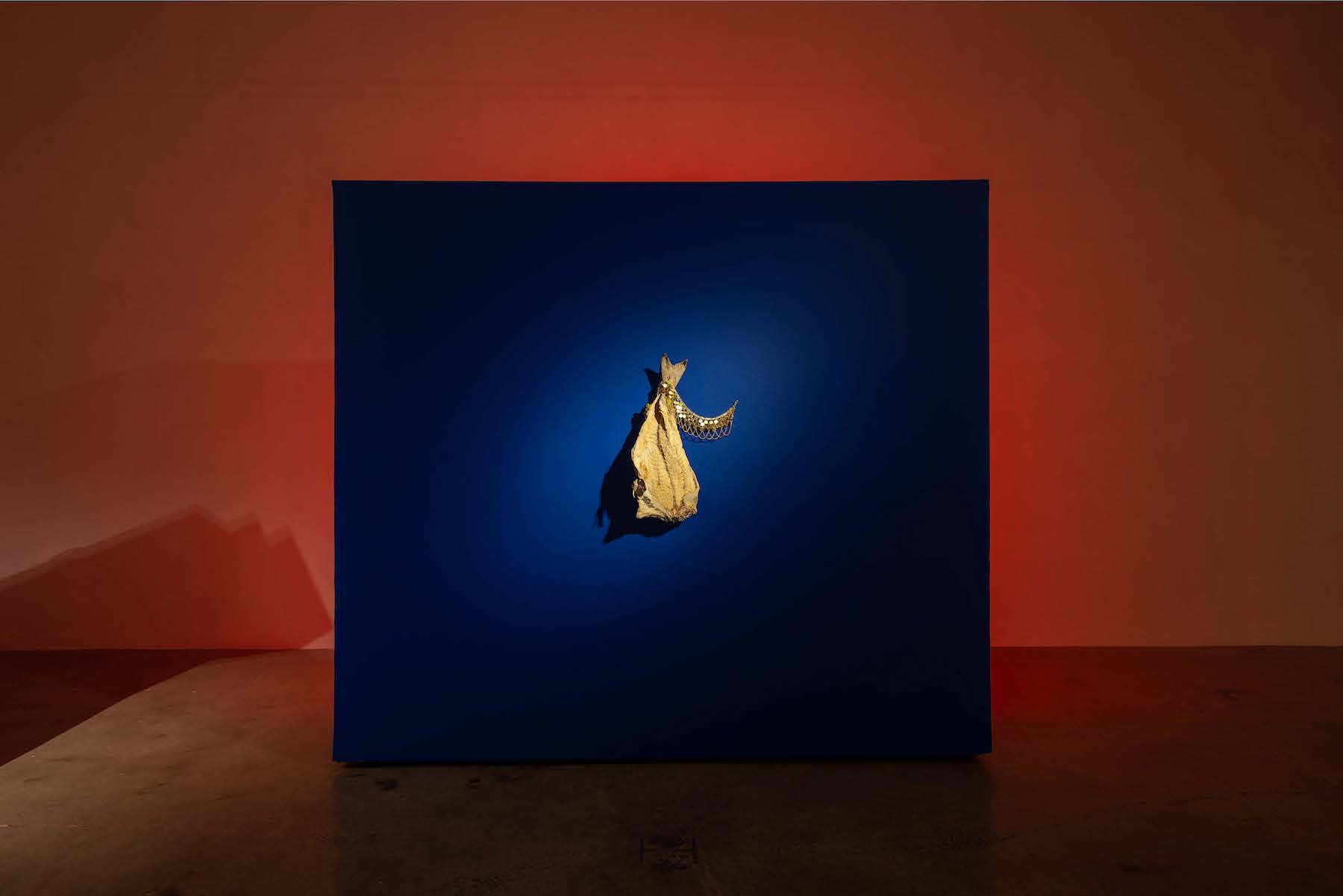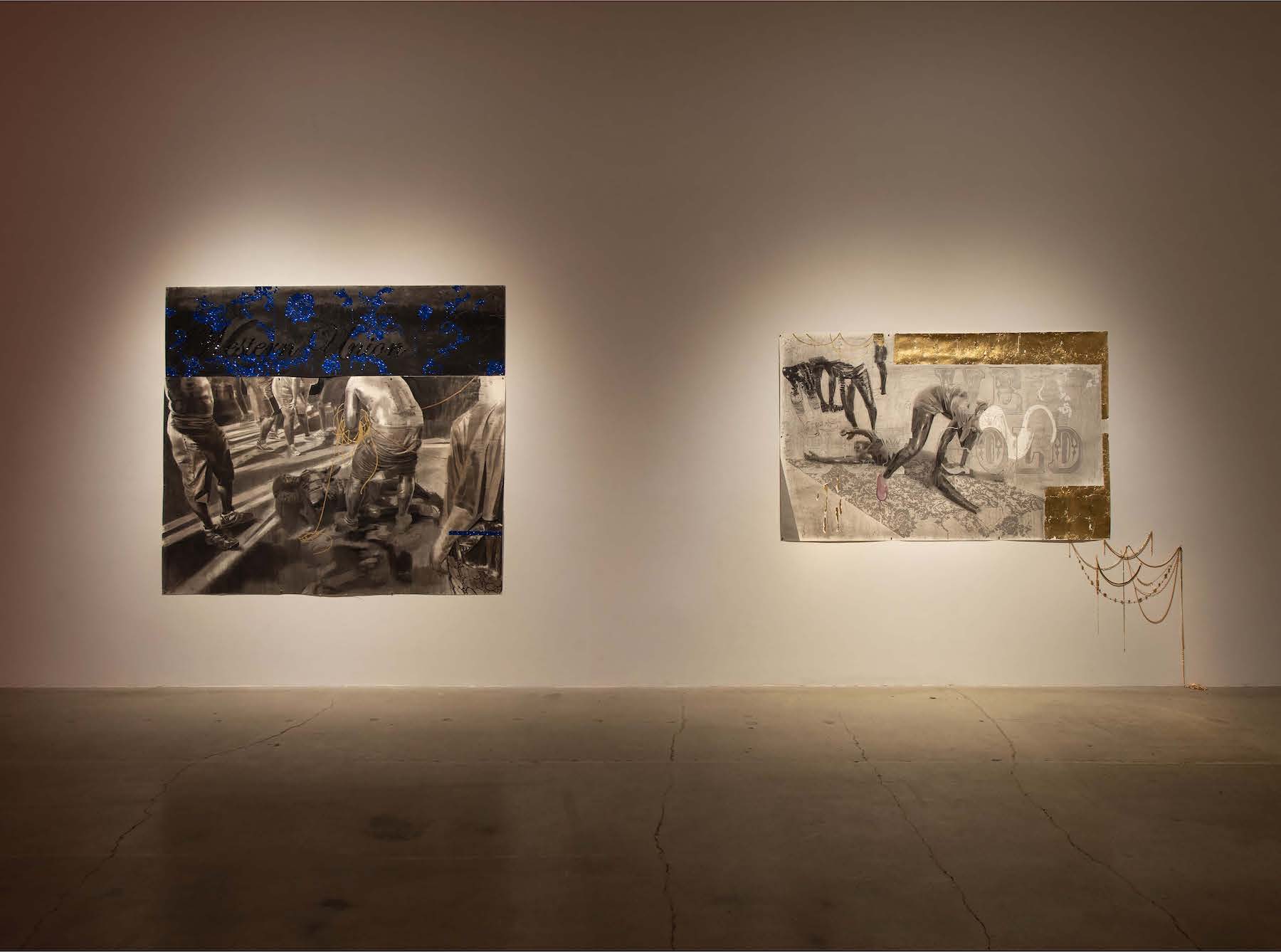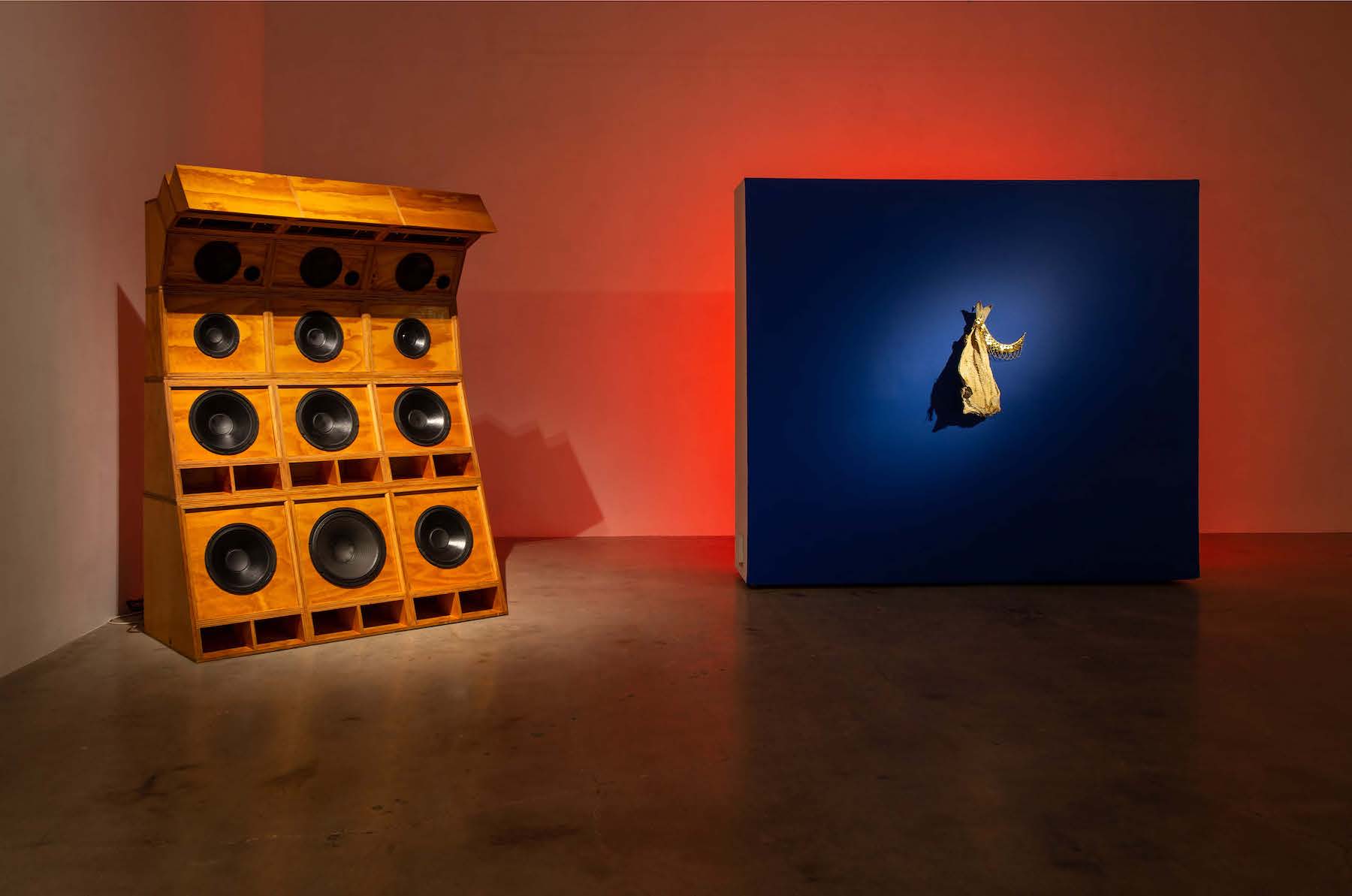Cosmo Whyte: Mining the Body for Gold
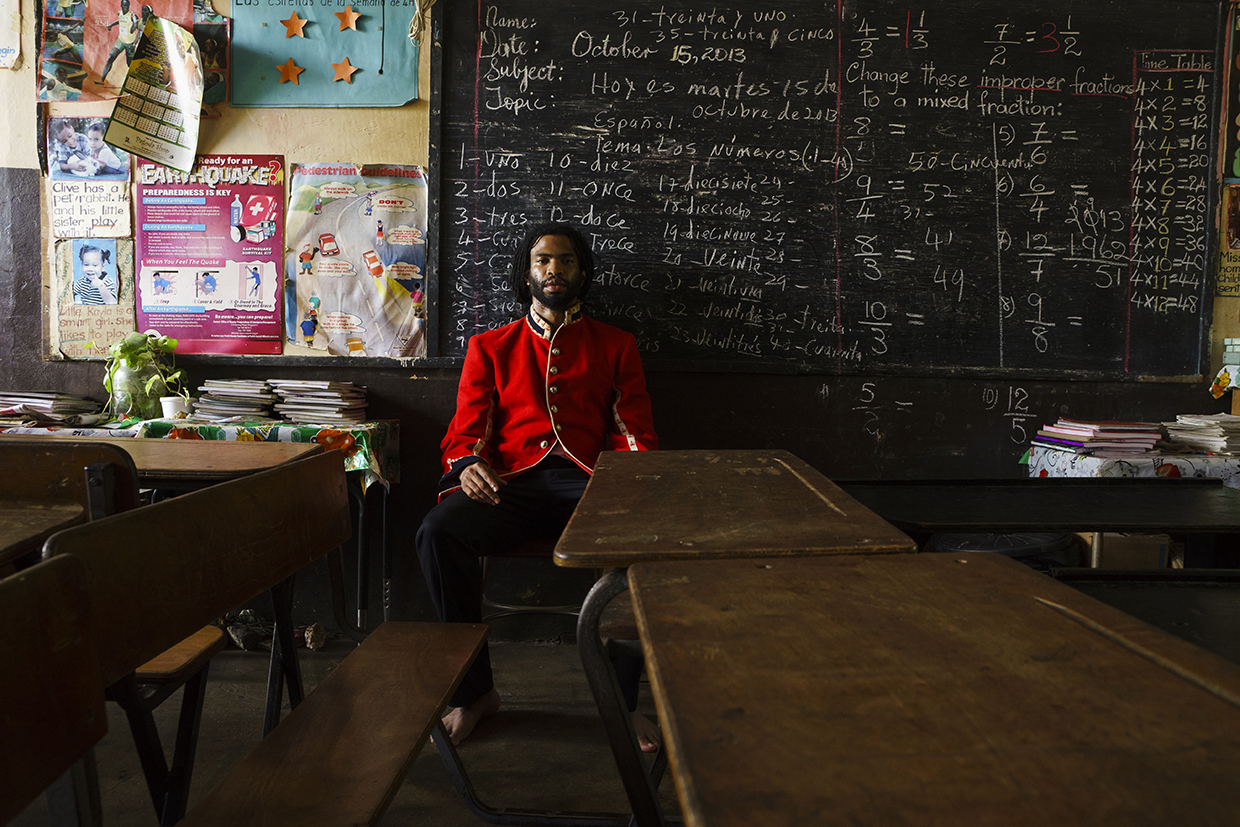
Photo: Cosmo Whyte [courtesy of the artist]
Share:
Contemplate the gravity of claiming a space as home. How heavily does it weigh on your shoulders? How deep do your feet dig into the ground? The complex colonial histories of the Americas make the very concept of home a negotiation. Nations seized through conquest create legacies of disruption and violence that hinder us from easily taking root. To survive, some resign themselves to willful ignorance, while others sever their limbs.
For Atlanta-based artist Cosmo Whyte, our shared colonial history did not end with a proclamation of independence. It permeates the soil, echoes in the wind, and forms a critical part of who we are. In his multimedia practice, Whyte reveals the layers of meaning compounded by these negotiations, highlighting what is misunderstood, lost, and sacrificed.
I spoke with Whyte on the occasion of his Working Artist Project exhibition at the Museum of Contemporary Art of Georgia (MOCA GA) in Atlanta.
TK Smith: Beneath Its Tongue the Fish Rolls the Hook to Sharpen Its Cadence is the title of your exhibition at MOCA GA. What inspired the title?
Cosmo Whyte: I was fortunate and blessed enough to participate in an exhibition in Norway [in 2019]. It was a brilliant show called The Sea is History, curated by Selene Wendt at the Museum of Cultural History in Oslo. There were artists participating from Pakistan, Ghana, Guyana, and Jamaica. At the [opening] reception for the show, we had a dinner where they offered a Norwegian delicacy, which was cod tongue. It never dawned on me that a fish has a tongue. I knew that Norwegian cod was the saltfish in Jamaica’s ackee and saltfish, which is our national dish. I knew the history of saltfish being brought to the island as a cheap source of protein for the enslaved population and [later] for indentured laborers. So I was aware of this history, but the idea of the fish and its tongue never crossed my mind. Later on I tried to craft some kind of title around the idea, and my sister, Robyn Whyte, who is a writer, looked over my shoulder and told me to move two sentences from my [original] orientation. It just fell into place.
TKS: The title poetically speaks to the relationship between the fish and the fisherman. The hunted and the hunter. It’s subversive in that it gives power and autonomy to the fish. How does this speak to the larger themes in your work?
CW: My work always starts with an investigation or interrogation of my own background and history. Growing up in Jamaica, the echoes of colonialism vibrate very strongly. It varies depending on where you are and how you position yourself, but I’ve always been fascinated with how the “formerly colonized” navigate spaces. As I matured into my own artistic practice, I kept that experience at the forefront. I try to ask questions that will hopefully facilitate a nuanced conversation but always bear in mind that the ultimate goal is to empower the “formerly colonized” bodies. I must note there is an unease with which I use the term “formerly colonized.” I don’t view colonialism as a singular event in history with a start and end date. Rather it is continuous, morphing and adapting with new actors. There is no “post.”
TKS: When you say the echoing effects of colonialism, what does that feel like?
CW: Thinking [through] my own education in the Jamaica public school system, the last two years of high school, grades 12 and 13, I was being groomed to sit the Cambridge A Levels Exam. The exam papers [were] flown in from England and then flown back to be graded. In those last two years, the expectation is that you dress as an English schoolboy. This is normalized within Jamaican culture, but it was one of the first times that I had a bodily response to these colonial retentions. Wearing the tie—and at times a blazer in tropical heat—your body revolts against it. I remember an upperclassman in the 13th grade turned to me and said, “Don’t worry, your body will get used to it.” Even as a teenager I recognized that as a profound moment. What he said was a profound metaphor for the way in which we force our bodies to cope and take on these [colonial] retentions, even though the climate was not built for it. That is colonialism in a nutshell. It’s enforcing this particular will, aesthetic, and ideal onto a location and a body that it is foreign to it and was never meant to yield or bend to it.
Cosmo Whyte, “The Fire Next Time”, nickel plated steel ball chain curtain, 130″x 122″, 2019 [photo: Fredrik Brauer, courtesy of the artist and the Museum of Contemporary Art, Atlanta], on loan from the artist, fabricated in partnership with HEKLER, Special Assistant David Popa, based on archival image “Brixton Riots, London, April 1981” by Manchester Daily Express, rights acquired Getty Images, dedicated to Cosmo and Judith Whyte
CW (cont’): There’s something to be said [for] having lived outside the island, [for] stepping away for a moment. You start to question things that are normalized when you go back because you are looking at it with a new set of eyes. Even while I was living in Jamaica, I was always questioning, Why we were doing this and How did this come around? The Caribbean is interesting to me because, like [the US], it’s this place in which all these nationalities [converge]. It’s a place that has all these diasporic ties. I find [that by] stepping outside of the Caribbean you start to see those ties more prominently.
TKS: What does the notion of home become for an immigrating people? Displaced people? How do the concept and the loyalty to nation change?
CW: Home is constantly a contested space for immigrants. If you look at political rhetoric now, home centers around this notion of who belongs, who can claim a space as home. This is something I feel the migrant is always wrestling with. It’s always in flux. Home exists in one’s mind, so it sometimes gets frozen in place through this nostalgic gaze. I still try to stay connected [to Jamaica]. I go back, but even in going back there’s a reckoning with the fact that the Jamaica that I left [after] my last visit is not the Jamaica that I see now. Just like every other place, it’s vibrant, it’s constantly moving, it’s growing, it’s changing.
The work that I’m trying to do is also a critique of nationalism. In terms of this idea of allegiance to nationality, that is also a minefield, because at this … time I have dual citizenship. I’m nationalized as an American, but I also have my Jamaican citizenship. I think there’s a conflating of narratives, a conflating of identities, that happens within nationalism where certain things get omitted from the national story. I’m interested in the negotiations, the sometimes-violent negotiations, that happen in order to say which stories get omitted. Part of my role [as an artist] is to complicate those narratives as much as I can.
TKS: What has come to shape your own American identity as you live through these negotiations?
CW: One of the things that felt harder to navigate when I first got here: there is a certain level of ambivalence to colonialism in the US. [Referencing] this great essay by Okwui Enwezor called “Modernity and Postcolonial Ambivalence,” in the countries that were “formerly colonized,” the task of reckoning with that colonial past is way more urgent. I make that comment acknowledging that [the US] was also colonized by the British, but then it followed a different path. It felt like the passing of the torch of empire from Britain to the US in a way. Developing nations will never experience that kind of trajectory of history.
Early on, the question for me became How can I contribute to this conversation of race, of identity, in the US? What do I bring to the table that would add a level of nuance to it? I think this wrestling with colonial retentions [in my work]—but also not romanticizing them and not situating the work solely in the past, and thinking about it echoing here in the present—are some of the ways that I can contribute.
Cosmo Whyte, “Salted Fish and Gold Brixton, 2019”, salted Norwegian cod, custom gold jewelry, and gold mapping pins, 2019 [photo: Fredrik Brauer, courtesy of the artist and the Museum of Contemporary Art, Atlanta]
TKS: Conversations tend to follow cultural retention in terms of retaining one’s native culture, history, experience, or traditions. Colonial retention is interesting because it speaks specifically to the ways we adopt and adapt to survive.
CW: Stuart Hall talks about cultural identity too, saying we’re not the same. We have to acknowledge it; we went through something. We can’t just romanticize the precolonial period and try to go back to that. There’s no going back. History has intervened, and we are changed. How do we reconcile with that? That’s what I’m investigating and what I hope the work is doing. Those are the questions that I’m fascinated by because they were so blatant growing up. Who are we? I think we’re all asking that. [The US] is asking that now. Developing nations are always asking that.
TKS: How does that show up in the work? What gestures, imagery, or materials do you find yourself returning to [as you] explore those questions?
CW: The archive. Going through various archives has been a way of exploring that. Viewing the archive as a medium [itself]. I have been using the archive to create these drawings, [and] now these beaded curtain pieces that serve as thresholds that the viewer has to pass through. I like the idea of people walking through the archives.
Another example: there is a neon artwork in the exhibition that has “We buy gold” written in Chinese. It’s in conversation with the drawings. Gold has been a reoccurring theme in my work. There’s an engraving [done in 1592 by Theodor de Bry that shows] Columbus arriving in the New World …. It’s from a series on [Europeans’] travels in the East and West Indies. Columbus has this very ornate staff that he is striking into the ground. You see Spanish sailors, in the background, erecting a cross, Natives running away, and more ships arriving. Natives are in front of him, presenting him with gold ornaments and jewelry. I remember seeing that image early on in my history books in Jamaica. It is an image that has stuck with me. It is an image that has informed the European idea of the Americans. This search for gold has dominated the Caribbean’s interaction with outside powers. Sugar became gold at one point, bananas became gold, and so the idea of gold reoccurs.
TKS: Your practice incorporates various mediums: drawings, sculpture, photography, audio, and this neon installation. In each medium it appears you not only create works that are aesthetically different, but you also seem to be asking different questions [with them]. Can you speak on that?
CW: One [reason] is to not get pigeonholed, and, two, that’s just not how my mind works. Early on I recognized the limitations of each medium. Something could be a drawing, but why does it have to be a drawing? I’m always asking this as I’m approaching an idea and allowing the ideas to drive and determine the medium. Why does it have to be in this form? What’s the best way for the viewer to experience this? Also [recognizing] that objects embody history, energy, and all these things. If you start bringing them in, how does that change the [viewer’s] experience?
Also, [I use different mediums] to decolonize the sensorial experience, in a way. It’s not just about the visual, because the visuals have had a hierarchy for so long. How do you incorporate sound, smell, and touch? I wanted an exhibition where you would experience all of that at once. You walk through the curtain so [it] literally brushes up, across your body. [Then there’s] the smell of the fish, the sound from the speakers, and then all the pieces that rely more on the visual.
Cosmo Whyte, “Beneath Its Tongue, The Fish Rolls The Hook To sharpen Its Cadence”, installation view, 2019 [photo: Fredrik Brauer, courtesy of the artist and the Museum of Contemporary Art, Atlanta]
TKS: So, what are the limitations of drawing, [the medium] which I’ve seen you are most associated with?
CW: Clearly, it’s only activating one of the senses. Specifically, with drawing, [I] enter into a contract with the viewer where it’s understood that I can take several artistic liberties. I can delve into my imagination, and [the work] is not bound to reality. However, if I bring an actual fish into the space, you know that it’s an actual fish that has had to be preserved, as opposed to a drawing that is referencing the fish in some form.
TKS: So, it’s less about multiple mediums and more about layers of meaning?
CW: Yeah, [with] the set of questions that I’m asking, the intention is to peel back layers. Even if you take a look at the way the work is situated and the references to different locations, I’m layering location on top of location, as well as layering senses. You walk through a curtain [with an image] of a race riot in Brixton, London, then at the far end of the room there’s a fish from Norway, then there’s a neon sign that’s written in Chinese, and then on the drawings there’s text hand cut into the [paper] advertising these kinds of predatory practices that are found in predominantly low-income neighborhoods. These pawnshops that say, “We buy and sell gold.” That, for me, is also referencing this location here in Atlanta. I was trying to layer all of these things on top of [one] another.
TKS: What would you say is unique about the way your work is received in Atlanta? You were recently in Of Origins and Belonging, Drawn from Atlanta at the High Museum of Art and the Scott Ingram-organized show PROJECT at the Temporary Art Center. You work at Morehouse College. You self-describe as an Atlanta-based artist. What does your work do here that it doesn’t do anywhere else?
CW: I’m always interested in how this work is received in different conditions. The work [is received] very differently in Jamaica than it is here. The Fire Next Time (2019) would be received very differently in London than it is here. Outside of Atlanta, I’ve shown in Jamaica the most, and for me that is always a testing ground for my ideas. It’s a community and a space very dear to me [and gives me] a way of exploring a set of questions and seeing how the community responds and what [people in it] understand and what falls flat.
Reception in Atlanta varies. I feel like I get asked to explain the work a lot here, but then I’ve also had people write beautifully about the work in a way that [made me feel] seen and understood. I find when people do the work, there’s a beautiful connection that happens. I think what the work does here [in Atlanta] is speak specifically to the immigrant question. I inhabit my identity as an immigrant here more than I would in Jamaica. In Jamaica, I’m a Jamaican artist, but that [identity] also fluctuates with being an expat. So, identity is a constant negotiation between spaces. In Atlanta, one of those spaces that I inhabit and work through is the immigrant experience.
Cosmo Whyte, “Beneath Its Tongue, The Fish Rolls The Hook To sharpen Its Cadence”, installation view, 2019 [photo: Fredrik Brauer, courtesy of the artist and the Museum of Contemporary Art, Atlanta]
TKS: Atlanta is a city that is situated within the United States. It carries that history, but it doesn’t have one set identity. There are so many transplants who are immigrants, tourists, all these things—a compilation. Your work has also shown all over the US, in Europe, and in Africa. There’s a large risk of miscommunications.
CW: The risk is [that] if you try to cater to everybody the work ends up losing any specificity and nuance. For me, the driving thing is [that] I want to create the kind of work … I want to see in the world. I’m interested in engaging in the conversation, knowing that we’re all coming from different starting points. My hope is that the work is asking you to slow down and try to decipher some of these layers. I’m fully aware that certain things are going to be lost on certain people, and that will fluctuate.
I’m comfortable with walking into a show and accepting that there are certain things that I don’t fully understand, and that is part of the art experience, too. I don’t always find other viewers, other art patrons, [who] have a similar [interpretation], so I’m hesitant to explain everything away. I really want people to do the work.
TKS: The root of your artwork is the question, and the art objects are explorations of the question?
CW: Yeah, and I am adamant that I am not trying to push an agenda. I am just trying to explore a set of questions. During that exploration, I may end up at a dead end on one side, but I’m trying to engage the viewer in a conversation, knowing that I don’t know where these lines of questioning are going to take me. I’m just trying to explore them, and, as I progress, become more nuanced and poetic in my exploration.
TKS: How does loss in translation collapse back into the experience of being an immigrant?
CW: For me, it’s that early culture shock. I remember first arriving in the US, not as a visitor, but knowing that I’m going to school here and I’ll be living here for a minute. I was going to Vermont. From Jamaica to Vermont—that alone is culture shock. That first trek, I had an experience in a restaurant where we got accused of stealing the waitress’s tip. When they found the tip, there was no apology given and some coded comment [was made] like, “We don’t need your business here.” Then, [at] the literal next spot we went to, the response was, “We don’t serve niggers.”
For me, it was a stark contrast in how I understood myself as a black person, as opposed to trying to figure out the many moving parts of race in America. It was about unlearning and relearning. There’s [a recently deceased] East Indian American poet named Meena Alexander, who in The Shock of Arrival: Reflections on Postcolonial Experience talks beautifully about that experience of having to unlearn and then relearn everything, and that is part of the immigrant experience.
There’s [the] trauma of letting go, of reconciling with the ideas of who you were in your home country versus how you’re going to have to navigate your host country. Those two very rarely sync up perfectly. There’s going to be a lot of things that are lost in translation. As you stay longer in that host country, you become more fluent in the language of race, gender, sexuality, all of these things, because they’re all cast anew when you first arrive. For me, navigating translation has been my experience since day one.
TK Smith is a writer, researcher, and aspiring curator of American art. His interests lie at the intersections of art, material, and race.
